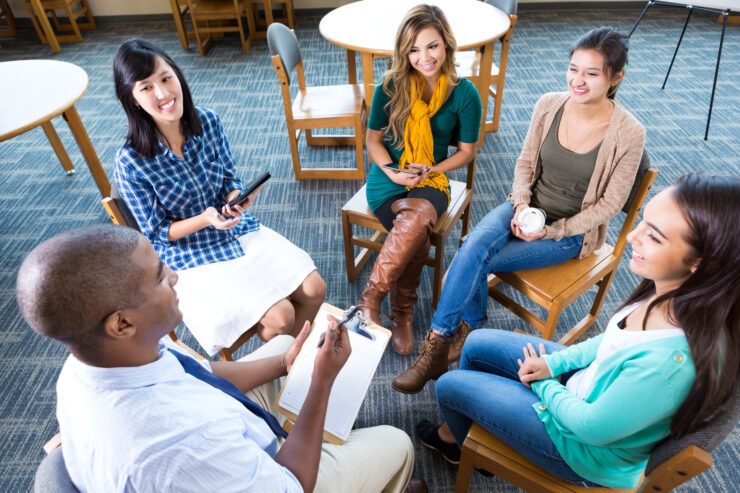Teaching and Learning Activities
Teaching and learning activities (TLAs) refer to activities that teachers implement to achieve the desired learning outcomes Biggs, J. (2003). Aligning teaching for constructing learning. Higher Education Academy, 1(4). . Examples of TLAs include
- delivering a lecture to a large group of students in a lecture hall
- having students work together on a case study in tutorials, or
- asking students to go through literature before entering class.
Ideally, TLAs activate all students and help them do something with the knowledge they are receiving. In this way, students construct their own learning through relevant TLAs, and will more likely to be motivated Biggs, J., & Tang, C. (2011). Teaching for Quality Learning at University. Maidenhead, UK: Open University Press. . Students who are motivated are more concentrated and less distracted while studying, plan their study activities better, process the study material in a more in-depth way, are less anxious when assessed, feel better about themselves and achieve better test results Vansteenkiste, M., Zhou, M., Lens, W., & Soenens, B. (2005). Experiences of Autonomy among Chinese Learners: Vitalizing or Immobilizing? Journal of Educational Psychology, 97, 468-483. https://doi.org/10.1037/0022-0663.97.3.468 .
When designing, selecting and incorporating TLAs, it is important for teachers to keep not only the intended learning objectives, but also their students in mind. This implies using activities that not only activate students, but also include all students and encourage all students to participate. For example, when chosing appropriate TLAs, instructors try to keep in mind students having difficulties moving through the classroom or having visual impairments . Lastly, through use of TLAs that encourage participation of all students, instructors can make sure that multiple viewpoints are included and not only those of the more vocal students. The challenge in stimulating active participation, however, is designing activities in such a way that students still feel comfortable and that students welcome multiple perspectives. Being open to new perspectives is also important to function in a society that requires students to engage with people with diverse background. What can teachers do to ensure that all students can participate in all activities? This will be addressed in this section.




